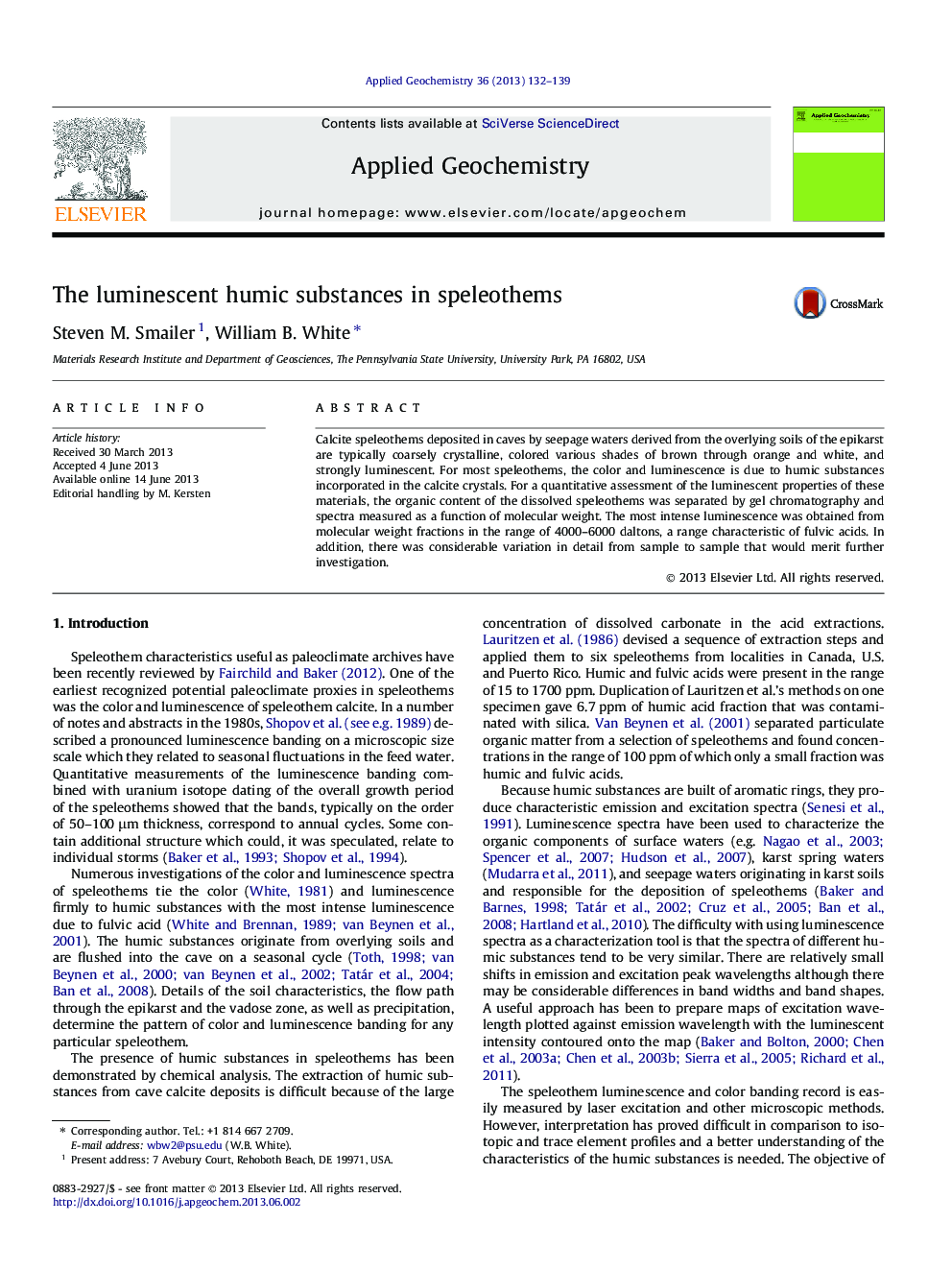| Article ID | Journal | Published Year | Pages | File Type |
|---|---|---|---|---|
| 4435991 | Applied Geochemistry | 2013 | 8 Pages |
•Humics from speleothems were separated by molecular weight using gel chromatography.•Luminescence spectra by molecular weight shows maximum luminescence in fulvic acid range.•Each luminescence map is unique to local environment.•Any signal of regional climate appears only in details of the spectra.
Calcite speleothems deposited in caves by seepage waters derived from the overlying soils of the epikarst are typically coarsely crystalline, colored various shades of brown through orange and white, and strongly luminescent. For most speleothems, the color and luminescence is due to humic substances incorporated in the calcite crystals. For a quantitative assessment of the luminescent properties of these materials, the organic content of the dissolved speleothems was separated by gel chromatography and spectra measured as a function of molecular weight. The most intense luminescence was obtained from molecular weight fractions in the range of 4000–6000 daltons, a range characteristic of fulvic acids. In addition, there was considerable variation in detail from sample to sample that would merit further investigation.
